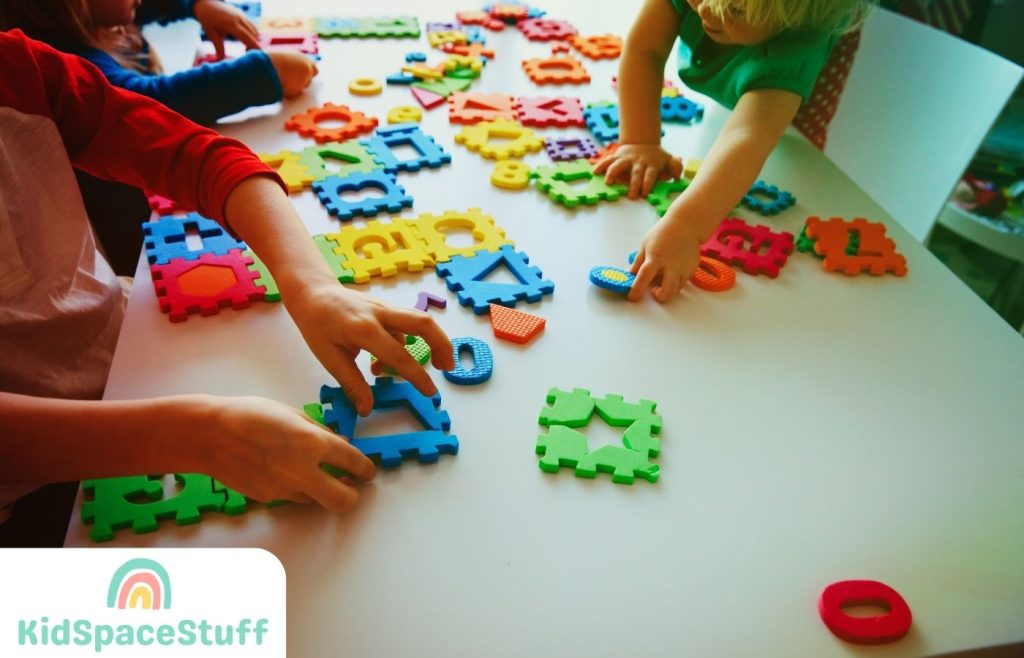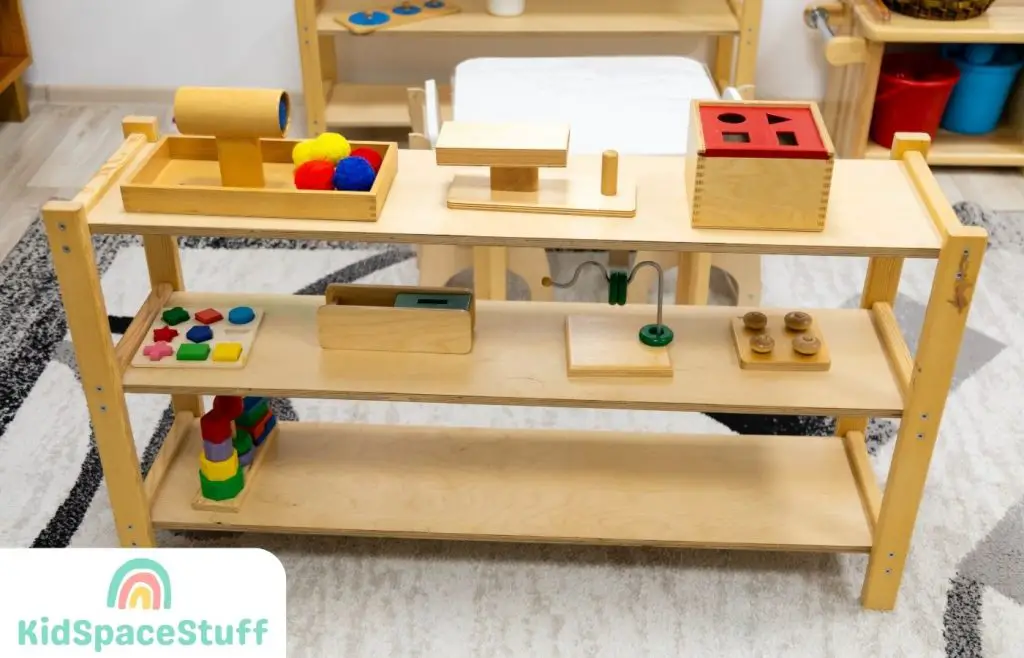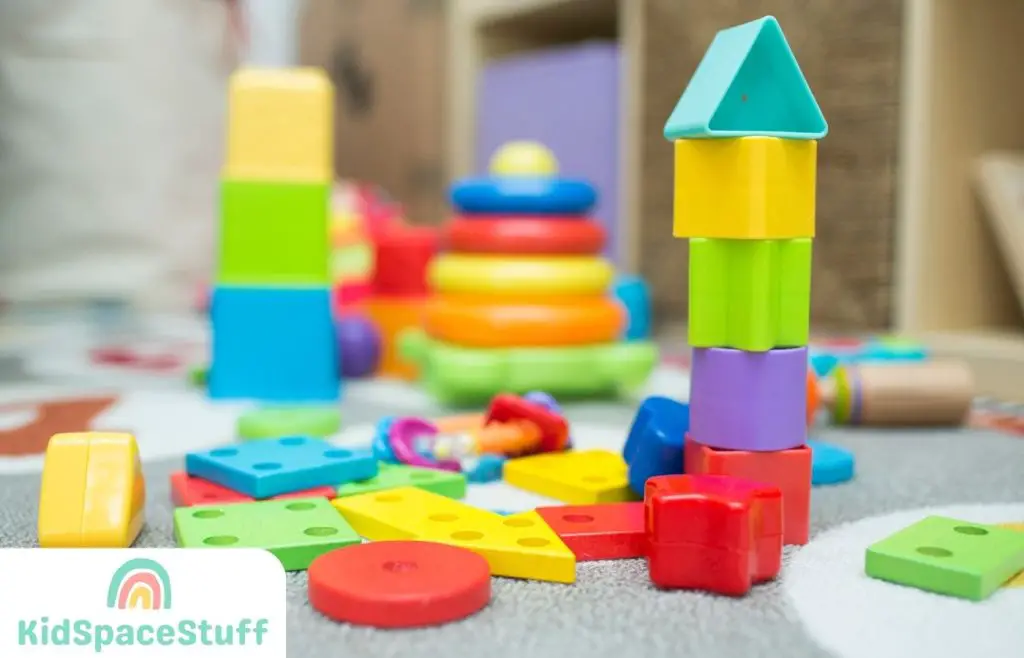Navigating the course of parenting is always an incredible journey. I am a mother of several and I’ve been through those sleepless nights, fussy eating phases, tantrums, and those wonderful milestones, including when kids learn shapes.
A question I’ve been asked frequently by other parents is, “When do kids learn shapes?” Like every other facet of child development, it isn’t fixed and varies from child to child.
In this article, I’ll answer the question “when do kids learn shapes?” and give you a few ideas to help you child learn shapes. Let’s dig in!
When Do Kids Learn Shapes?

Generally, children start to understand and identify basic shapes such as circles, squares, and triangles between 2 and 3 years of age.
This is when they begin to notice the world around them and are starting to process details in their environment. It’s also around this time when kids learn shapes in everyday objects and also learn to count and begin recognizing letters.
My eldest daughter began to show an interest in different shapes around two and a half years old, often pointing out circles and squares she saw in her surroundings. In contrast, my middle child wasn’t as enthusiastic about shapes until he was about three years old.
It’s essential to remember that every child is different and they learn at their own pace so you shouldn’t try to rush the process.
What is the Normal Age Kids Learn Shapes?
While most children start learning about basic shapes between the ages of 2 and 3, not all kids will master this skill at the same time.
For some, the understanding of shapes and colors may come earlier, while others may take a bit longer. As with all aspects of development, there’s a wide range of “normal.”
By the time they reach the age of four or five, most children can recognize and name more advanced shapes like rectangles, diamonds, and hexagons. They might also start understanding that shapes can be combined to form new shapes, and begin recognizing shapes within other shapes.
How to Teach Kids Shapes

Teaching shapes to your child doesn’t have to be a complex process. From my personal experience, I’ve found that the best learning often happens through simple, fun activities and games in everyday life. Here are some strategies I used to help my kids learn shapes:
Shape Hunting
Shape hunting is a fun and engaging activity for children.
This involves identifying and naming different shapes found in your home or neighborhood. Whether it’s the circular wheels on a car, the square windows of a house, or the rectangular shape of their favorite book, kids learn shapes through observation and repetition. It’s a real-life game of ‘I Spy,’ where every discovery is a learning opportunity.
You can start with simple shapes like circles, squares, and triangles, gradually moving on to more advanced shapes as your child’s understanding improves.
The beauty of shape hunting is that it can be done anywhere, from a stroll in the park to a car ride, making it an ideal activity to keep your child engaged while learning.
Using Shape Toys

Shape-sorting toys, building blocks, and shape puzzles are a great way to introduce shapes to children.
These toys not only teach your child about shapes, but they also enhance their problem-solving skills and fine motor abilities.
For example, shape-sorters require children to match the correct shape to the correct slot, helping them learn to identify shapes. Building blocks introduce them to multiple shapes and colors, allowing them to create and recognize different shapes. Shape puzzles challenge their ability to fit shapes together, building their spatial reasoning skills. My youngest loved her shape sorter; it became a daily ritual for us to play with it together, making shape learning part of our everyday playtime.
Reading Books About Shapes
There are numerous children’s books available that help children learn shapes.
These books can reinforce the learning of shapes and colors in a fun and engaging way. They often feature common shapes in fun and relatable contexts, helping children develop a good understanding of shapes. Reading such books together encourages interactive learning. You can ask your child to point out shapes, trace them with their fingers, and even create stories around the shapes. This, in turn, will keep them engaged and make the learning process more enjoyable.
From my experience, turning learning into a shared reading adventure not only boosts children’s cognitive development but also fosters a love for reading.
Crafting and Drawing
Crafting and drawing offer excellent opportunities for kids to learn shapes.
Encourage your child to draw shapes or use play dough to create different shapes. This not only reinforces shape recognition but also boosts their creativity and fine motor skills.
From crafting their favorite animals out of construction paper to drawing a family portrait, there are countless ways to incorporate shapes into these activities.
Another fun activity I enjoyed with my children was creating shapes with stickers, then asking them to count how many circles, squares, or triangles they had used. These activities combine fun, creativity, and learning into one, making shape learning a delightful experience.
Singing Songs About Shapes
Songs and rhymes are a fun way to introduce children to shapes.
Music can enhance memory and make learning more enjoyable. Singing songs about shapes was one of our favorite activities, and it helped my children understand shapes better.
You can incorporate dance movements to represent different shapes, such as making a big circle with your arms for a circle or forming a diamond shape with your fingers for a diamond. This combination of music and movement makes the learning process engaging and helps in better retention of shape names. It’s not only an effective way to learn, but it’s also a fun bonding time for you and your child.
Here’s a great video that can help your child start learning shapes!
Using Everyday Objects
Shapes fill our everyday lives. Use daily objects to point out different shapes to your child. From the triangular slice of toast at breakfast to the circular moon in the night sky, there are countless opportunities to teach shapes.
Engaging your child in conversations about shapes in their surroundings helps develop their observational skills.
For instance, during meal times, talk about the shape of the fruits or vegetables, or during bath times, discuss the shapes of their bath toys. These interactions, when done consistently, can lead to your child recognizing shapes on their own and even excitedly pointing them out to you. This approach turns everyday life into a learning experience and helps your child understand that shapes are an integral part of their world.
Patience and Consistency are Key
Learning about shapes, like all aspects of early development, requires patience and consistency.
Continue pointing out shapes in everyday life and return to fun activities and games that reinforce the learning of shapes.
Remember that your child learns at their own pace, so it’s okay if they don’t master shapes as quickly as their peers.
The Role of Shapes in Child Development
Understanding shapes is a vital part of early education, building a strong foundation for more advanced mathematical concepts.
Recognizing shapes also contributes to children’s spatial reasoning and problem-solving skills. Even more than that, teaching shapes is about helping children understand the world around them.
Whether it’s recognizing the square shape of a window or the circular shape of a ball, shapes are a crucial part of our world.
Final Thoughts
So, when do kids learn shapes?
While there isn’t a specific timeline for when kids learn shapes, most starting to identify basic shapes like circles, squares, and triangles between 2 and 3 years old.
Teaching shapes can be a fun and interactive process that fits naturally into your child’s daily routine. Remember, the goal isn’t to rush their learning, but to nurture it in a loving, patient, and consistent way.
KidSpaceStuff is a site dedicated to helping parents find the best interior design, activities, and inspiration for their kids.